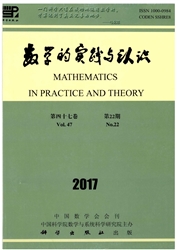

 中文摘要:
中文摘要:
马田系统(MTS)是一种多元模式识别方法,它首先通过正常样本来建立基准空间,再利用正交表和信噪比来筛选有效变量,最后通过马氏距离来进行分类、诊断和预测.当建立基准空间的正常样本中掺杂少数异常点时,MTS的性能必然会受到影响.根据多变量控制图原理对建立基准空间样品的适合性进行判别,将在控制线外的样品点删除后建立新的基准空间,并通过UCI数据集进行可行性分析及分类效果比较,结果显示:经多变量控制图优化后的MTS,其性能得到显著提高.
 英文摘要:
英文摘要:
Mahaianobis-Taguchi System (MTS) is a multivariate pattern recognition method.It uses the normal samples to establish reference space first, then uses the orthogonal table andsignal to noise ratio to screen variables, at last uses Mahalanobis distance to classify, diagnoseand predict. When the reference space contains a few outlier samples, its performance willbe affected inevitably. According to the principle of multivariable control charts, this paperidentified the suitability of every sample which established the reference space and createda new reference space after the sample points outside the control line were deleted. Thefeasibility analysis and the comparison of classification effect are by UCI data sets. Theresults shows: When MTS optimized by multivariate control charts, its performance had beenimproved significantly.
 同期刊论文项目
同期刊论文项目
 同项目期刊论文
同项目期刊论文
 期刊信息
期刊信息
